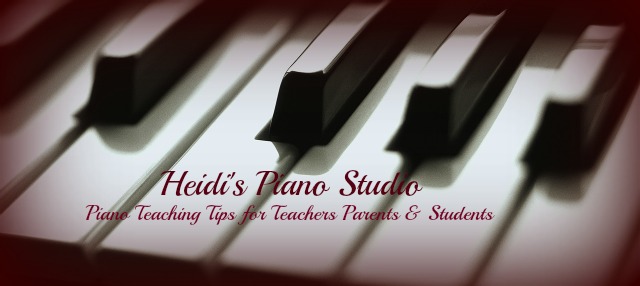Today I witnessed something amazing :) My son hopped on the piano bench this morning at 7 am to spontaneously practice. Usually getting him to practice is more like pulling teeth, or once again reminding him of our rules "
Yes you can play with friends, watch football, etc..
as soon as your practice and chores are done." My secret weapon: A Trepak duet. We've been playing it together this week and he keeps coming back to it because it is so fun to play and it sounds impressive.
I came up with this movement activity to engage my preschoolers in some fun and slipped in a little training on form. For older students I usually have them create
musical maps to understand and remember form in their pieces, but I think ramping up the movement makes it more memorable for the younger student, as well as allowing them to practice feeling the beat of the music.
As you listen to the music imagine a baseball player taking his turn at bat, running the bases, catching some fly balls and then coming back to bat to win the game.
Sing the words and do the actions indicated in italics.
1st Time at Bat (A) (Do actions on the strong beats)
Swing Swing
(Pretend you are swinging a bat to hit the ball 2x in a row)
Run
(Tiptoe run around the room or tap hands on lap to the beat like your hands are running)
Swing Swing
(Repeat actions)
Run
Swing Swing
Run
Swing Swing
Run
Heading to the Outfield (B) - (Do actions during words in ALL CAPS)
HEADING to the OUTfield
(Point away from body)
REACHING for a FLY Ball
(Reach with imaginary mitt for the ball)
STRETCH my MITT in TO the AIR
HEADING to the OUTfield
(Repeat actions)
REACHING for a FLY Ball
STRETCH my MITT in TO the AIR
I Caught One! I Caught One!
(Bring hand to palm as if catching the ball)
I Caught One! I Caught One!
We get to go to bat again
.(Cheering motions with arms)
2nd Time at Bat (A1)
Swing Swing
Run
Swing Swing
Run, Run, Run (faster and faster)
We Won!
Once the children have mastered the actions you could further expand their listening skills by having them count how many times they "Swing," listen for what new instruments begin to play on the later "swings" during the first time at bat, compare and contrast the 1st time at bat to the 2nd time at bat.












